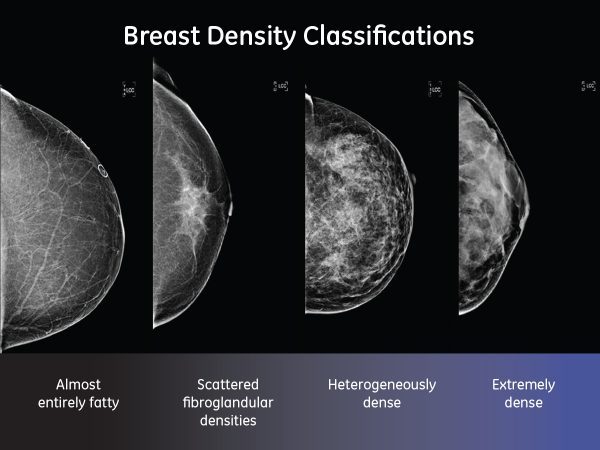Dense breast tissue is made up of glands and fibrous tissue and is an independent risk factor in and of itself for breast cancer. An abnormality on a mammogram can “hide” in dense tissue. In addition, cancers can form in the glandular tissue; there can even be some correlation between fibrous tissue and estrogen production.

Fortunately, there are new technologies that customize breast imaging according to the patient’s breast density, so that even the tiniest breast cancer can be identified in its earliest, most treatable stage.
Cancer is 4 to 6 times as likely to develop in women with breast density C or D. 1/3 of breast cancers are not visible in screening mammography in women in this group.
DENSE BREAST FACTS:
- Breast density has nothing to do with how the breast looks or feels; it is determined by a woman’s mammogram and described as one of 4 categories, A –D.
- Dense breast tissue is common and normal. 40% of women age 40 and over have dense breasts, 24% over age 70.
- Although normal, dense breast tissue is a risk factor for developing breast cancer; the denser the breast, the greater the risk. This is because an abnormality can be hidden in dense tissue on a mammogram and because cancers form in the glands and fibrous tissue that make a breast dense.
- Mammography remains the standard screening test for breast cancer and is proven to reduce deaths from breast cancer. However, in dense breasts, as many as 1/3 of breast cancers can be hidden on mammography and may go undetected until they are larger and more likely to have spread.
- Adding additional screening tests, such as automated whole breast ultrasound (ABUS), Contrast Enhanced Spectral Mammography (CESM), or MRI, substantially increase the detection of early-stage breast cancer in women with dense breasts.
Strong Evidence Supports Supplemental Screening
I have dense breasts…now what?
Any woman who has C or D breast density, especially if it’s in combination with one or more first-degree relatives with breast cancer, has as much as a four-fold increased risk and is the perfect candidate for supplemental screening. Because every woman is unique, there is a full range of breast imaging technologies that Lake Medical Imaging has introduced in Central Florida so that we can customize each patient’s breast screening to their particular breast density and unique history.
71% of breast cancers are diagnosed in dense breasts
Lake Medical Imaging has added supplemental screening exams for at-risk patients to improve screening outcomes by detecting early invasive cancers and decreasing interval cancer rates:
Tomosynthesis – 3D Mammography:
3D mammography can improve cancer detection over standard mammography, but this benefit does not appear to extend to women with extremely dense breasts.
ABUS – Automated Breast Ultrasound:
Used in conjunction with screening mammography, ABUS is the only breast cancer screening technology that has been FDA-approved for use in women with dense breast tissue. ABUS utilizes 3D ultrasound images (no radiation) to find cancers hidden in dense breast tissue that might be missed by mammography.
CESM – SenoBright Contrast Enhanced Spectral Mammography:
Performed soon after an abnormal mammogram or in women with dense breasts, CESM shows abnormal blood flow and subtracts away the dense tissue to highlight the presence of cancer. The simple exam is much like a regular mammogram, with the addition of a contrast agent; it can also be used as an alternative for patients who are not candidates for MRI.
MRI –Magnetic Resonance Imaging:
MRI is recommended as a supplemental screening for women at high (greater than 20% risk for breast cancer, regardless of breast density. Risk factors could include a personal or family history of breast cancer, or a BRCA1 or BRCA2 gene mutation.
By Cathrine Keller, MD




